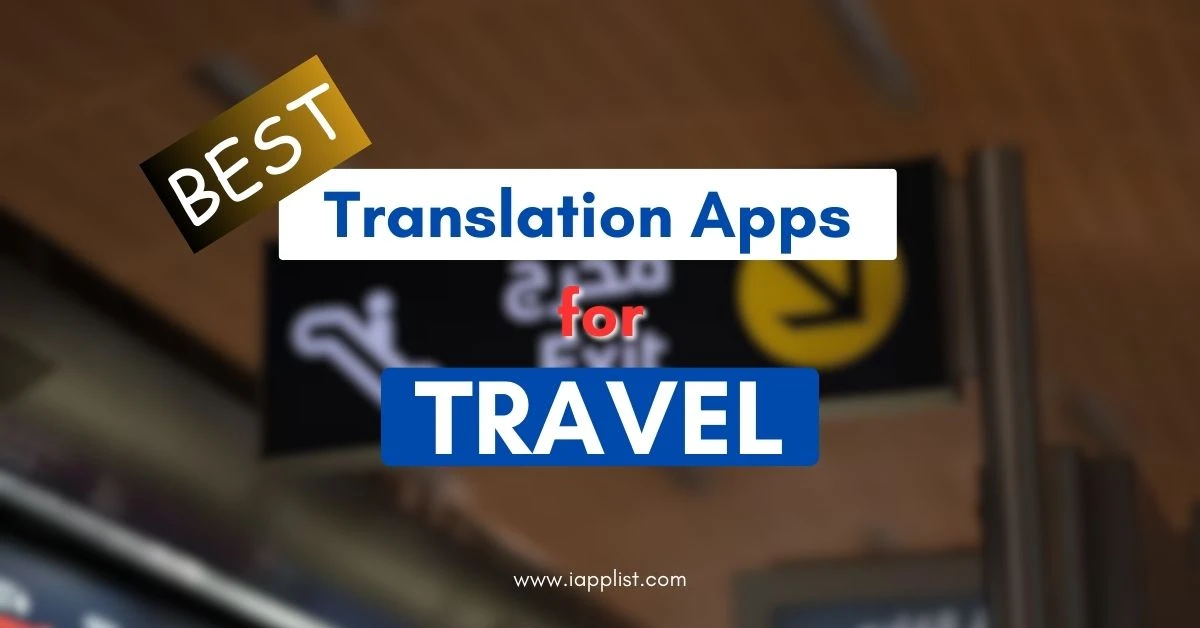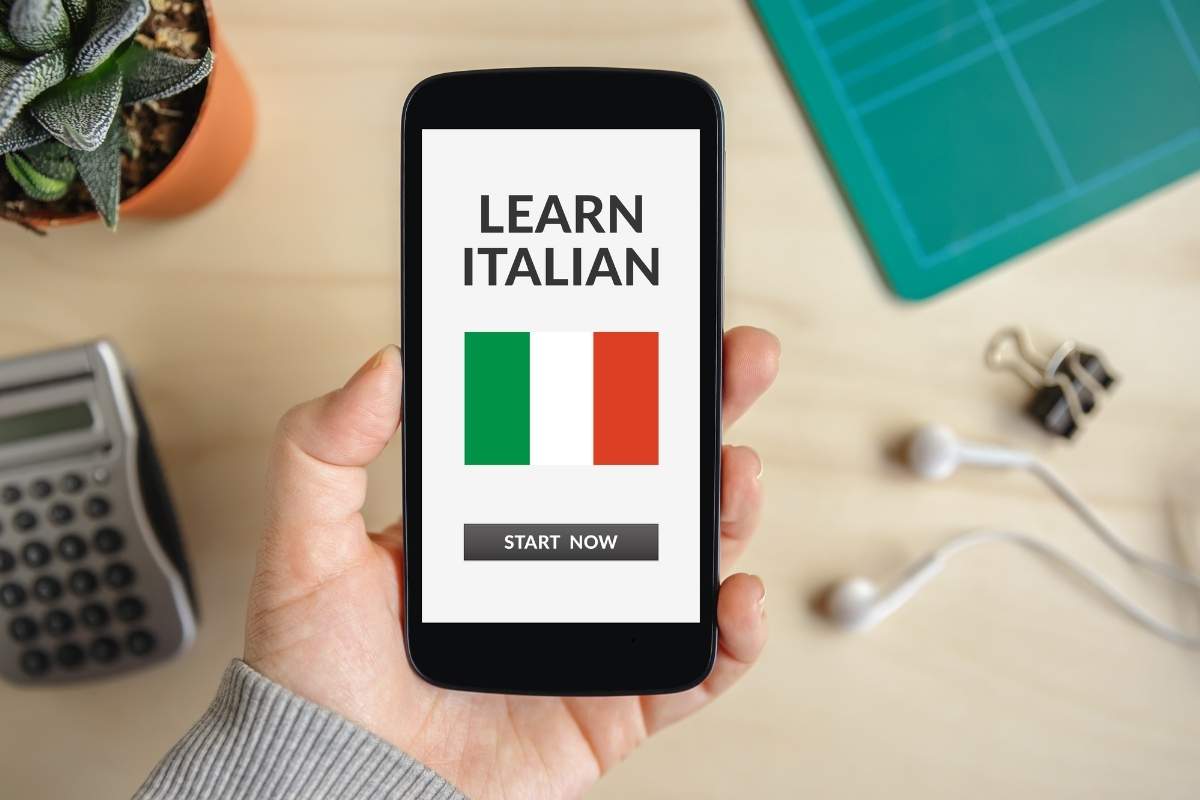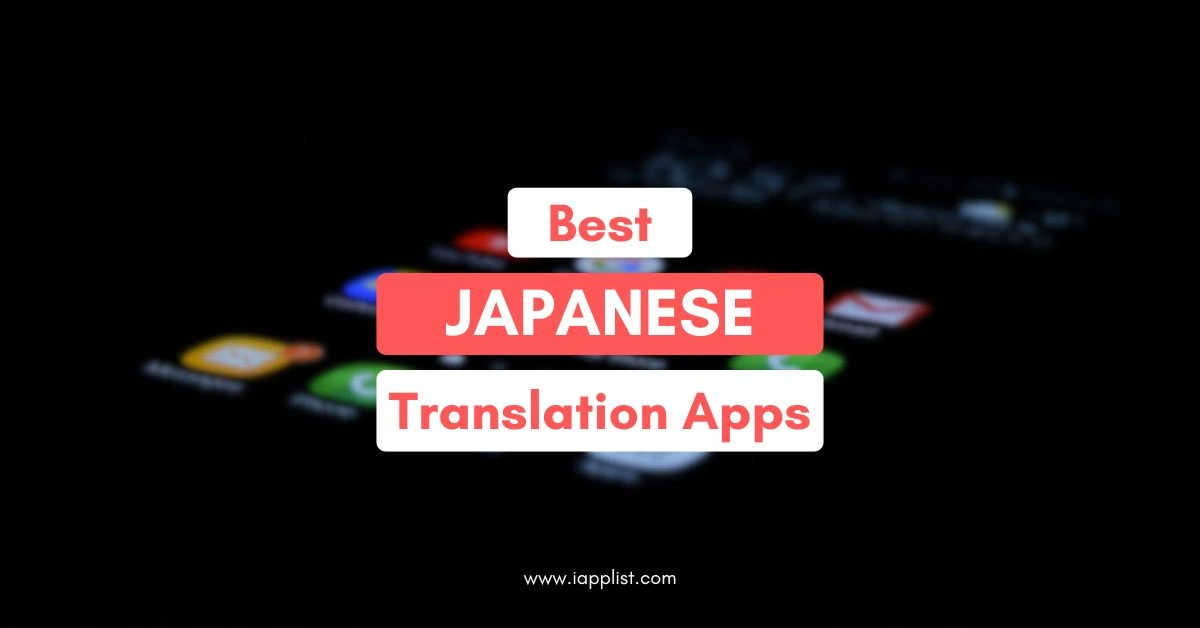31 Best Language Learning Apps to Finally Speak Like a Local
So, you want to learn a new language?
Honestly, it’s one of those things that feels exciting at first… and then kind of overwhelming, right?
You download an app, do a few lessons, and suddenly it’s like—ugh, where did the motivation go?
Been there.
The truth is, you don’t need boring textbooks or fancy classes anymore.
You just need the right app that keeps you going… the kind that makes learning feel fun instead of a chore.
And trust me, there are plenty out there.
That’s why I pulled together this list of 31 language learning apps.
Some are great if you’re just starting out, some help you actually practice speaking with real people, and some are just perfect for squeezing in five minutes of practice while you’re waiting for your coffee.
1. Duolingo
Duolingo is probably the first app that pops into your head when you think of learning a language — and for good reason.
It’s free, fun, and honestly feels more like playing a game than studying.
You get these quick little lessons where you match words, speak sentences, and practice listening, and the streak system makes you want to keep coming back every day.
Sure, it won’t make you fluent all on its own, but it’s amazing for building a daily habit and learning the basics fast.
Whether you’re just dipping your toes into Spanish or brushing up on French before a trip, Duolingo makes it super easy to stay consistent without ever feeling bored.
Also Read: Best Apps to Master Japanese Fast
2. Babbel
If Duolingo is all about fun, Babbel is more about structure.
Think of it as having a mini language course in your pocket.
The lessons are designed by real language experts, and they focus on practical conversations you’ll actually use — like ordering food, asking for directions, or making small talk.
It’s not just random words thrown at you; it builds logically as you go.
Plus, Babbel gives you grammar explanations that make sense (finally), so you understand why sentences are formed the way they are.
It’s great for anyone who wants a little more depth than Duolingo offers, but still in bite-sized lessons you can do during a coffee break.
3. Rosetta Stone
Rosetta Stone is basically the OG of language learning apps.
It’s been around forever, and the reason people still swear by it is the immersion method.
Instead of translating everything into English, it teaches you the language directly, with pictures, sounds, and repetition — just like how you learned your first language as a kid.
It feels strange at first, but once you stick with it, you realize how powerful it is.
You actually start thinking in the new language instead of constantly translating in your head.
If you’re serious about mastering pronunciation and getting a strong foundation, Rosetta Stone is still one of the best tools out there.
Also Read: Best Apps to Master Spanish Fast
4. Busuu
Busuu feels like a mix of a language app and a little social network for learners.
You go through lessons that cover reading, writing, speaking, and listening — but here’s the cool part: you can submit your practice exercises, and native speakers actually correct them for you.
The lessons are short and practical, so you’re not overwhelmed, and you can pick from a bunch of languages, from Spanish and French to Japanese and Turkish.
If you’re someone who likes feedback and wants to know you’re on the right track, Busuu gives you that extra push that many apps don’t.
5. Memrise
Memrise is perfect if you struggle with remembering vocabulary.
It uses this clever system with spaced repetition and fun memory tricks to help new words actually stick in your brain.
And the best part… You learn from real native speaker videos, so you hear how people actually talk — not just the slow, robotic voices you get in some apps.
The app feels lighthearted and even a little goofy sometimes, which makes it easy to keep coming back.
Whether you’re learning the basics or expanding your vocab, Memrise is one of the most enjoyable ways to load up on words you’ll actually use in real life.
6. LingQ
LingQ is a little different from the usual drill-style apps.
Instead of just giving you lessons, it lets you learn through content you actually enjoy — like articles, podcasts, and even YouTube videos.
You can turn almost anything into a language lesson, highlighting new words and saving them to review later.
It’s great for people who want to move past “textbook phrases” and start understanding real, everyday language.
The app might take a little getting used to, but once you figure it out, it’s an amazing tool to immerse yourself in the language you’re learning, on your own terms.
Also Read: 17 Apps to Learn Italian Like a Native Speaker
7. Mondly
Mondly is all about quick, interactive lessons that you can squeeze into your day without feeling like homework.
It teaches you vocabulary, phrases, and even grammar through short daily lessons, quizzes, and conversations.
The app uses speech recognition, so you actually practice speaking out loud and get feedback on your pronunciation.
Plus, it has a really cool AR and VR feature if you’re into immersive tech — you can practice real-life scenarios like chatting at a restaurant or asking for directions.
If you’re looking for something modern and engaging that doesn’t eat up too much time, Mondly is a solid choice.
8. Clozemaster
Clozemaster is kind of like the next step after Duolingo.
Instead of starting with basic words, it teaches you vocabulary in the context of whole sentences using cloze tests (fill-in-the-blank style).
This way, you see how words naturally fit into conversations.
It feels more advanced and is great for people who already know some basics and want to build real fluency.
The app has a huge database of sentences across dozens of languages, so you’ll never run out of material.
If you’re past “hello” and “thank you” and ready to dig deeper, Clozemaster is the app that keeps pushing you forward.
9. HelloTalk
HelloTalk flips the script by connecting you directly with native speakers instead of just giving you lessons.
It’s basically a chat app where you can message, voice call, or even video chat with people learning your language while you learn theirs.
There are built-in translation and correction tools, so you don’t feel lost when you make mistakes.
What makes it fun is the social side — you can post updates, join discussions, and get instant corrections from the community.
If you’ve ever wished you could “just talk” to someone in your target language, HelloTalk makes it possible right from your phone.
10. Tandem
Tandem is a lot like HelloTalk, but it’s a bit more structured.
You sign up, list the language you’re learning and the one you speak, and the app pairs you with people who are a good match.
You can chat through text, voice notes, or even set up video calls.
The vibe feels more like having a dedicated language buddy than just random conversations.
Plus, if you ever want extra help, Tandem also has professional tutors you can book.
It’s perfect if you want that real back-and-forth practice with someone who’s just as eager to learn your language as you are to learn theirs.
Also Read: 25 Best Apps to Learn Russian Like a Native Speaker
11. Beelinguapp
Beelinguapp is such a clever app for reading practice.
It shows stories side by side in your native language and the one you’re learning, so you can follow along without getting lost.
You can read classics, news articles, or even kids’ stories, and the app highlights the text as it’s being read out loud.
It feels almost like having karaoke for language learning.
If you enjoy reading and want to train your brain to recognize patterns and grammar naturally, this app makes the process way less intimidating.
Plus, it’s actually fun to see how familiar stories sound in another language.
12. Lingvist
Lingvist is all about efficiency.
It doesn’t just throw random vocab at you — it learns what you already know and adapts the lessons to focus on the words and grammar you actually need.
The app claims it can teach you the most useful 5,000 words of a language quickly, which is enough to handle most conversations.
It’s clean, no-frills, and really focuses on results.
If you’re someone who doesn’t want too many gimmicks and just wants to get fluent faster, Lingvist is a fantastic choice.
13. Mango Languages
Mango Languages feels like a hidden gem in the app world.
A lot of people don’t know about it, but it’s actually super solid.
The lessons are conversational from the start, teaching you phrases you’d actually use when traveling or meeting new people.
It also sneaks in cultural tips so you don’t just learn the words but understand the context too — which is huge.
One bonus: many public libraries in the U.S. actually give free access to Mango, so you might not even have to pay for it.
If you want something practical and straightforward, Mango is definitely worth checking out.
14. Pimsleur
Pimsleur has been around forever, and its app version is just as effective as the old audio courses people swore by.
The method is all about speaking and listening — so you get lessons that make you repeat, recall, and build sentences out loud.
It’s perfect if you spend time commuting, walking, or driving since you can learn hands-free.
The focus is on building confidence in real conversations rather than endless drills.
If your main goal is to actually speak the language naturally, Pimsleur does an incredible job of training your ear and your tongue at the same time.
15. Drops
Drops is easily one of the most fun apps on this list.
It’s built for short, five-minute sessions where you learn new words through visual associations, swipes, and taps.
The whole thing feels like a colorful game, which makes it super addictive.
While it doesn’t go deep into grammar or sentence building, it’s fantastic for growing your vocabulary quickly.
And with dozens of languages (including some rare ones), you can pick up new words in no time.
If you’re the kind of person who learns best through visuals and repetition, Drops will hook you right away.
16. LingoDeer
LingoDeer is especially popular for Asian languages like Korean, Japanese, and Chinese, but it also covers European ones too.
What makes it stand out is how well it explains grammar in a simple way.
Instead of just giving you phrases to memorize, it actually teaches you how the language works, so you can build your own sentences confidently.
The lessons are interactive, with listening, speaking, and writing practice all in one.
If you’ve ever felt lost with languages that have tricky alphabets or grammar rules, LingoDeer breaks it down step by step without overwhelming you.
17. FluentU
FluentU takes real-world videos — like movie clips, news, and even music videos — and turns them into language lessons.
You watch authentic content with interactive subtitles, so you can tap on a word to see what it means and how it’s used.
It’s great for hearing natural accents and picking up slang or expressions you won’t usually find in textbooks.
The app also quizzes you on what you’ve watched, so it sticks.
If you love learning by watching shows or videos anyway, FluentU makes it productive while still being entertaining.
18. Lingualift
Lingualift feels less like an app and more like having a personal study plan.
It gives you structured courses along with tips on how to actually learn effectively.
They even offer language coaches who guide you, which is a nice bonus if you tend to lose direction.
The lessons are clear, well-organized, and go deeper into grammar and culture compared to lighter apps.
It’s a great pick for learners who want something serious and reliable, but still flexible enough to fit into daily life.
19. italki
italki is like having a personal tutor whenever you want.
Instead of fixed lessons, you choose from thousands of native-speaking teachers and book one-on-one sessions that fit your schedule and budget.
You can go as casual as a conversation partner or as structured as a full-on language course.
The cool part is you can practice speaking right from day one, which really speeds up confidence.
If you’ve ever wished you had someone patient to just sit and chat with you in your target language, italki makes that possible without leaving home.
20. Preply
Preply is similar to italki but with a little more structure in how tutors set up their lessons.
You can find teachers who specialize in exam prep, business language, or just conversational practice.
The platform is super flexible, so you can choose the teacher that matches your learning style best.
It’s great if you want guided learning instead of just winging it.
Plus, with so many tutors available, you can usually find one in your price range, which makes it accessible for pretty much everyone.
21. Cambly
Cambly is perfect if speaking practice is your biggest goal.
It connects you instantly with native English speakers for on-demand video chats.
The app is especially popular with people learning English, but the idea works well if you want real conversational practice.
What makes it cool is the flexibility — no need to book ahead, you can just hop in and start chatting.
The tutors are friendly, patient, and used to working with learners at all levels.
If you feel shy about speaking, Cambly is a safe space to practice and build confidence in real conversations.
22. Speaky
Speaky is another great language exchange app where you can chat with people from all over the world.
It’s simple, free, and lets you practice through text, voice, or calls.
The community is super active, so it’s easy to find partners for almost any language.
What makes it nice is how casual it feels — like chatting with a friend instead of sitting in a classroom.
If you want real practice without overthinking, Speaky is one of those apps you can just jump into and start learning while making new connections.
23. Speechling
Speechling focuses on one thing: helping you actually sound like a native speaker.
You record yourself speaking sentences, and real coaches give you feedback on your pronunciation.
It’s kind of like having a language teacher in your pocket who listens and corrects you every day.
You also get tons of listening practice, so your ear gets trained alongside your speaking.
If your main struggle is pronunciation and sounding natural, Speechling is a game changer.
24. ELSA Speak
ELSA Speak is an AI-powered app that’s especially great for improving English pronunciation.
You speak into the app, and it uses advanced speech recognition to pinpoint exactly where you’re going wrong — down to specific sounds.
It feels like a personalized coach that doesn’t get tired of correcting you.
The exercises are short, fun, and super practical.
If you’ve ever been nervous about your accent or unsure if people understand you, ELSA Speak helps you polish your pronunciation until you sound clear and confident.
25. ChatGPT
ChatGPT isn’t a traditional language app, but it’s surprisingly powerful for practice.
You can have full conversations in your target language, ask it to correct your mistakes, or even request custom exercises.
Want to role-play ordering food in Paris or chatting with a Spanish friend? ChatGPT can do that instantly.
The best part is you can practice anytime, without worrying about judgment.
It won’t replace real human interaction completely, but as a free, flexible tool for practicing writing, grammar, and even speaking (if you use it with voice), it’s one of the most versatile options out there.
26. Google Translate
Google Translate has come a long way from just being a clunky dictionary.
Now it supports real-time conversation mode, where two people can speak in different languages and the app translates instantly.
You can also point your camera at signs, menus, or documents and see instant translations.
It’s not perfect, but it’s insanely helpful when traveling or learning the basics of a new language.
While it’s not meant for structured lessons, Google Translate is a must-have companion app for quick translations and on-the-go learning.
27. Anki
Anki is a flashcard app on steroids.
It uses spaced repetition — a system that shows you words right before you’re about to forget them — which makes memorization way more effective.
You can download pre-made decks for almost any language or create your own with text, audio, and even images.
It’s a bit bare-bones compared to flashy apps, but don’t let that fool you — it’s one of the most powerful tools for serious learners.
If you’re determined to build a strong vocabulary base, Anki is an absolute must.
28. Quizlet
Quizlet is another flashcard-style app, but it feels a lot more polished and social than Anki.
You can create your own sets or choose from millions of user-made ones covering pretty much every language out there.
The app has fun study modes like “Match” and “Test,” which make learning feel less like memorization and more like a game.
Plus, you can add images and audio to your cards for better recall.
If you like flexibility and enjoy learning through interactive study tools, Quizlet is a simple but super effective way to lock in new vocabulary.
29. Lingopie
Lingopie is perfect if you love TV shows and movies.
It lets you stream real foreign-language shows with interactive subtitles.
You can click on words while watching to see definitions and save them to review later.
It’s like Netflix, but built for language learning.
The best part… You’re exposed to real accents, slang, and cultural references, which makes your learning feel authentic.
If you’ve ever thought, “I’ll just watch shows in another language and pick it up,” Lingopie actually makes that strategy work in a structured, fun way.
30. LingQ Kids
LingQ Kids is basically the child-friendly version of LingQ, designed for younger learners.
It uses fun stories, colorful visuals, and interactive lessons to keep kids engaged while picking up vocabulary and grammar naturally.
The content is simplified, but the method is the same: learning through reading and listening in context.
If you’ve got a child who’s curious about languages (or if you want to start them early), this app makes it feel more like playtime than studying.
It’s a great pick for families who want to explore language learning together.
31. OpenLanguage
OpenLanguage is built around real-world dialogues, so instead of random vocab lists, you actually listen to conversations that sound like everyday life.
Each lesson comes with transcripts, vocabulary notes, and cultural tips, so you’re not just learning what to say but also why it’s said that way.
The app feels like having a practical crash course in living the language, not just studying it.
It’s especially handy if you’re preparing to travel or move abroad and want to get comfortable with natural speech patterns.
If you’re serious about learning through context and culture, OpenLanguage is a fantastic way to round out your study routine.
My Final Take
Learning a new language isn’t about finding the “perfect” app — it’s about finding the one that actually keeps you motivated.
For some people, that’s Duolingo with its streaks and gamified lessons.
For others, it’s something immersive like LingQ or Lingopie, where you dive into real content.
And if you’re all about speaking, then apps like italki, Tandem, or HelloTalk will give you that real-life practice nothing else can replace.
The truth is, you don’t need all these apps.
Pick one or two that fit your style, stick with them, and make it part of your daily routine.
Language learning takes time, but with the right app by your side, you’ll be surprised at how quickly you start sounding more natural.
So go ahead — download one, try it out, and start speaking like a local.






